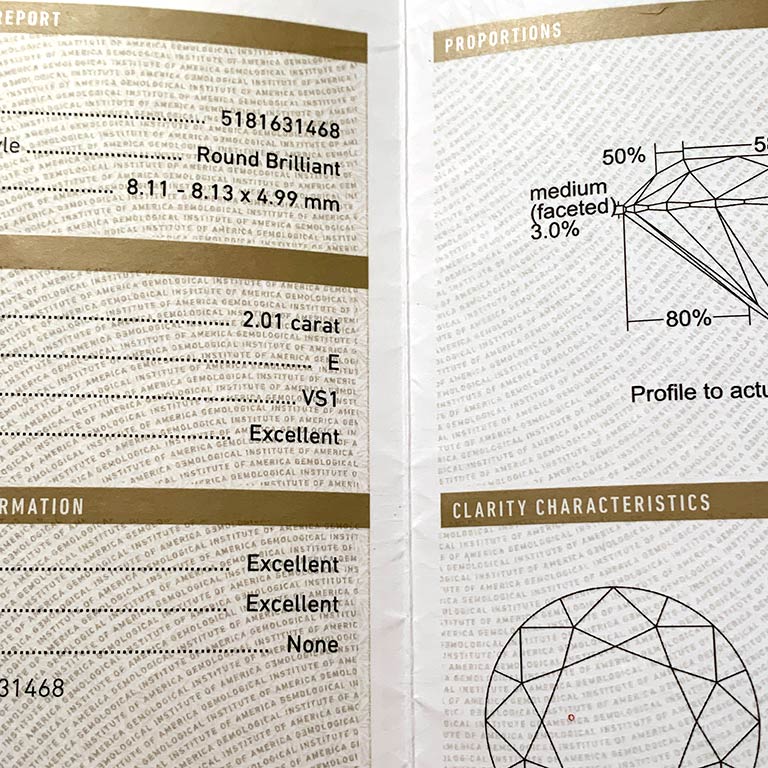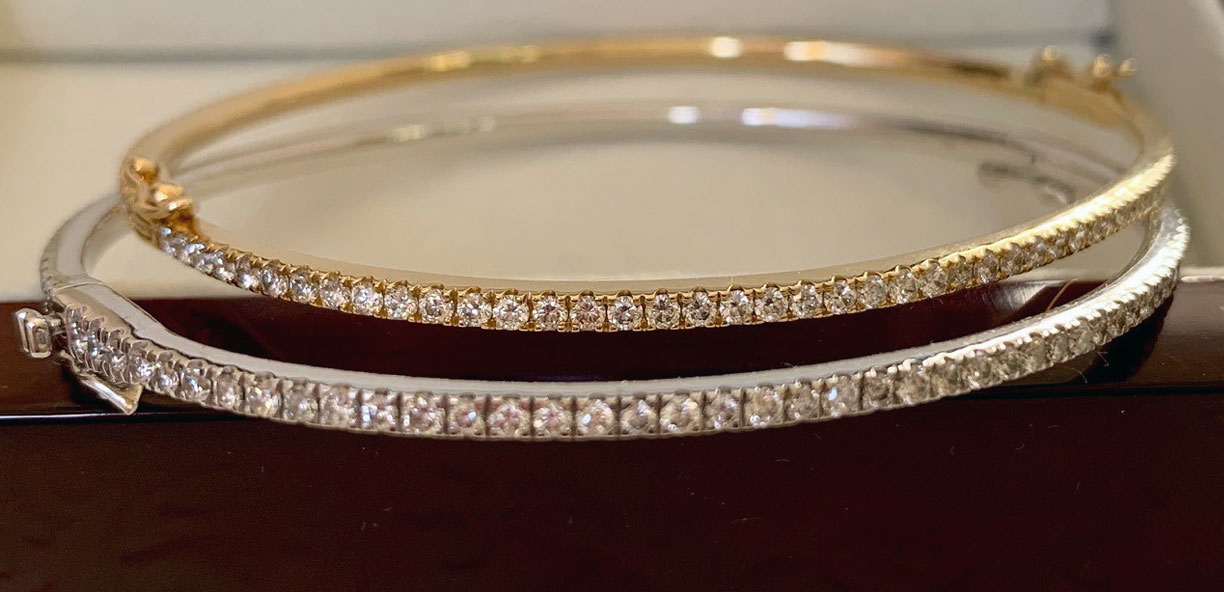
Carat denotes the weight of the diamond, i.e. its size. Carat is abbreviated as “ct” and has nothing to do with the carat value of gold, which is a measurement of how much gold is actually in a gold piece. A one carat diamond corresponds to 0.2 grams. In turn, a carat can be divided into hundredths, e.g. 0.25 carats. The diamond in the picture is 10 carats and costs around CHF 100,000.
Size is the most obvious factor in determining the value of a diamond. Size is also the easiest factor to assess; the diamond is simply placed on a very accurate set of scales. If you wish to throw in some “diamond speak”, you can use terms such as “35 points”. What is a 35 pointer? A carat is divided into 100 points. In other words, a diamond weighing 0.35 carats is a thirty-five pointer, while one weighing 0.03 carats is a three pointer.
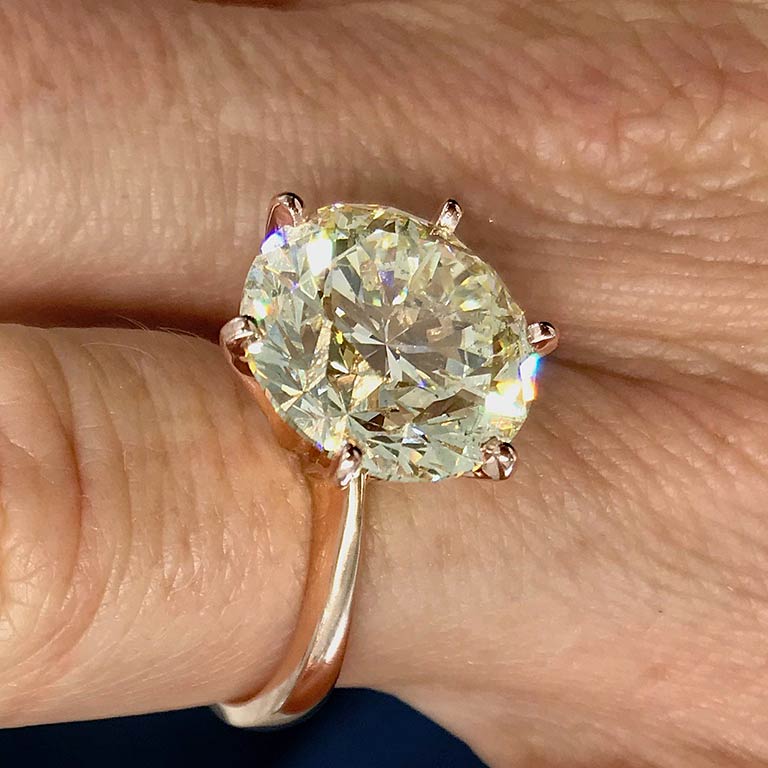
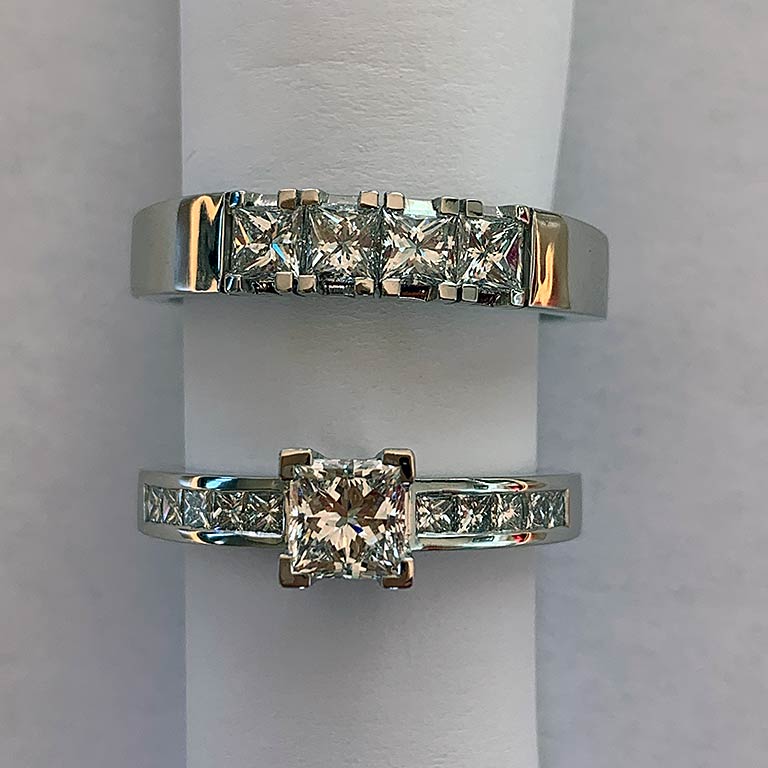
In very rough terms, you can say that a round diamond with a surface of 5 mm as seen from above is 0.5 carats and that 6.5 mm equates to 1 carat. The larger the diamond, the rarer – and, therefore, more expensive – it is. Two 0.50 ct diamonds are cheaper than one 1 ct diamond even though they add up in total to 1 ct. The picture shows a ring containing 4 x 0.25 ct princess cut diamonds and a ring containing a princess cut centre diamond of 1 ct. Many people dream of a one carat diamond on their finger, and I would be the first to agree that such a diamond would be really splendid!
To my customers who would like the most possible diamond for their money and do not feel that an even carat value is important, I would always say that they can also take a look at the diamonds just below one whole or one half carat, as the uneven weight comes at a slightly more favourable price.
The pictures shows a 1.20 ct round diamond of colour F on the left and 1 ct diamond of colour H on the right
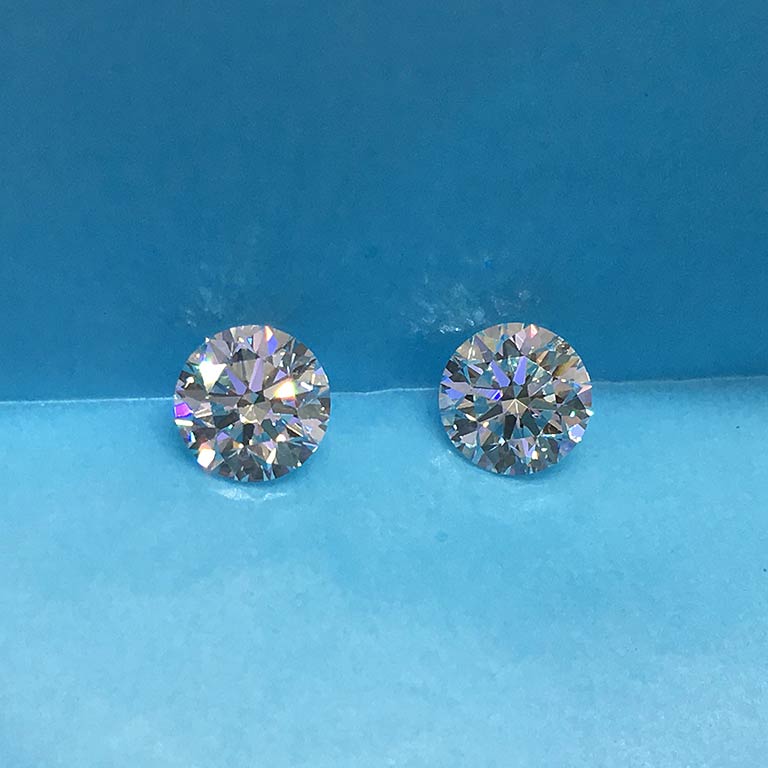
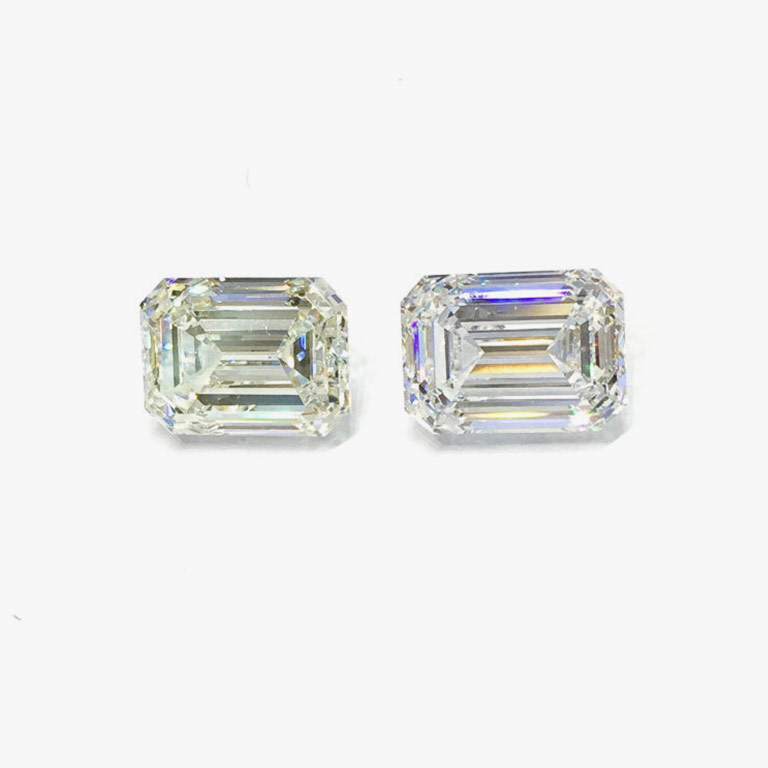
In a diamond, the finest colour is no colour at all. On the other hand, as this is a matter of taste I should actually say that the person wearing the diamond is the one to decide which colour they think is most attractive. The whiter the diamond, the more exclusive it is. In other words, there are fewer white diamonds than yellow/grey-tinted ones, and so the white ones are more expensive.
The emerald cut diamond on the left has a colour of G and the one on the right a colour of D.
The colour of the diamond can be affected by the gold in which it is set. A diamond set in platinum or white gold generally looks very slightly whiter than one set in yellow or red gold. Furthermore, some consider it looks more elegant to choose yellow or red gold for a diamond of a somewhat “inferior” colour.
This is why most diamonds are not white
The yellowish/greyish/brownish colour found in most diamonds results from nitrogen getting into the carbon. White diamonds are very rare. Diamonds are also available in other colours, such as green, red, blue or pink. This is where other substances have sneaked their way into the carbon structure. These other colours are extremely uncommon and, very often, can be more expensive than completely white diamonds.
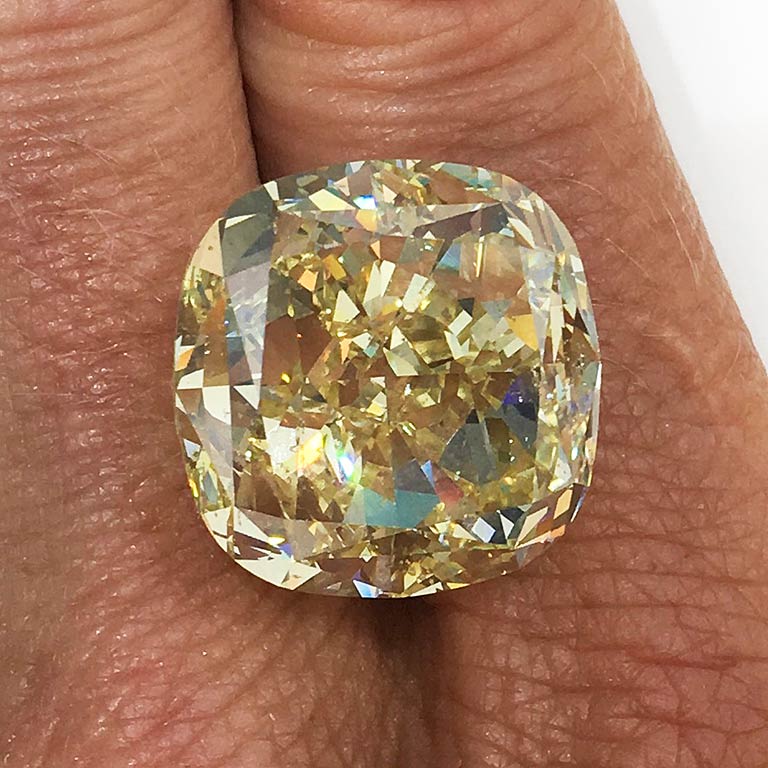
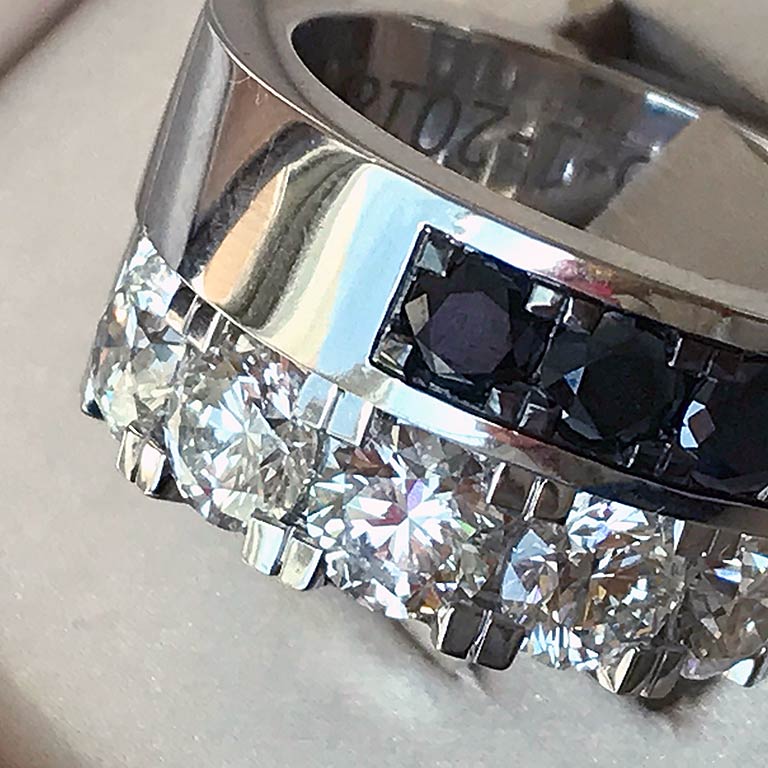
It is important to know that most colourful diamonds on the market do not owe their colour to nature but rather have been coloured artificially. If you are looking for those black diamonds that are so popular nowadays, bear in mind that most of them have been coloured. Naturally black diamonds are expensive, and in general you can add an extra zero to the price of an artificially coloured diamond if you want a naturally black one.
Some people regard clarity as more important than the carat value, while others set greater store by an eye-catching size, and prefer a, somewhat yellowish diamond with many inclusions, as long as it is big.
Sometimes you hear the words River, Top Wesselton, Wesselton, etc., to denote the colours of diamonds. The letters are more precise, so always ask for the letter. In fact, do not just ask for the letter – ask to see the certificate! If you are looking at slightly larger diamonds, i.e. closer to one carat or more, there is a big difference in price between D and E, let alone D and G! Of course, you can also see a clear difference in colour between G and D.
Sometimes, a small diamond can appear whiter than a larger one, even though they are of the same colour.
The diamond should not only be as white as possible but as clean as possible. The fewer inclusions in the diamond, the more valuable it becomes. After all, it is the sparkle from the diamond that we want to enjoy, and if there are too many inclusions in the diamond they break the path of the light, causing the diamond to sparkle less. Under the right conditions, diamonds are the gemstones that sparkle most.
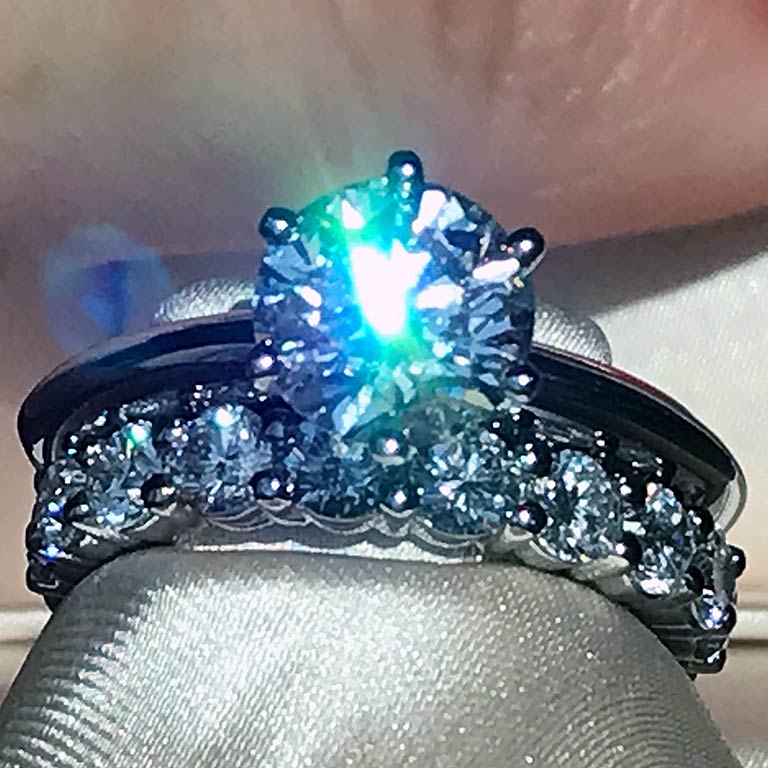
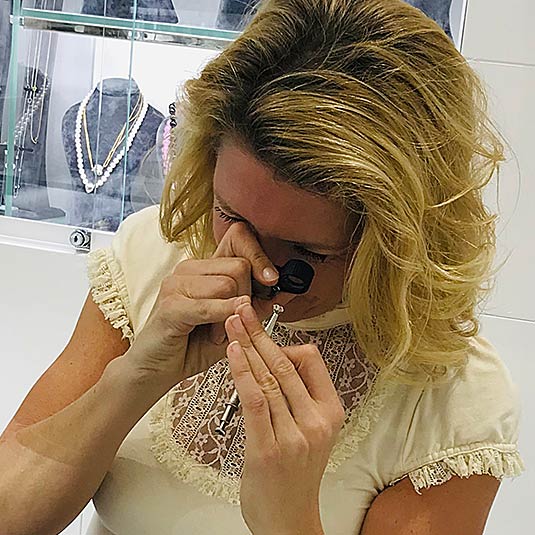
The expert gemmologists who assess the clarity of diamonds use a magnifying glass (loupe) that magnifies ten times. Sometimes, a diamond is described as being “loupe clean”, i.e. no inclusions are visible at ten times magnification. Gemmologists also assess diamonds using a microscope.
Millions of years ago, when the diamond was being created by the intense pressure and heat of the Earth’s interior, traces of microscopic particles were left. Other minerals, too, may be present, or some “fault” may have developed in the structure of the diamond itself. Sometimes, there are even cracks within the diamond. These are, quite simply, geological relics. It means that it is not possible to find two identical diamonds.
The really small inclusions are not visible to the naked eye, nor indeed through the loupe. On the other hand, when you are taking a close look at diamonds graded I1-I3, it is useful to know that not only do these have many inclusions that disturb the path of the light but also that they may be brittle and thus break into pieces if struck at the wrong angle.
The fewer facets a diamond has, the more important clarity becomes. If you choose an emerald cut diamond, it should have a clarity of at least VS1. If you choose a princess cut diamond, i.e. a square diamond with sharp corners, it is important that there are no inclusions close to the corners, as these may be damaged and may even crack. If you are thinking of a round diamond, you can go down to SI1.
Diamonds of 1 ct or more are normally sold with a certificate, on which the locations and types of inclusions are clearly described and drawn. If the diamond is below 1 ct, the certificate describes only the type of inclusions – not their location.
FL,IF (flawless, internally flawless)
VVS1,VVS2 (very, very small inclusions)
VS1,VS2 (very small inclusions)
SI1,SI2 (small inclusions)
Small inclusions that can be detected with a trained eye and that are clearly visible to the untrained eye with a loupe.
Pique I1- I3 (inclusions).
These diamonds have visible inclusions.
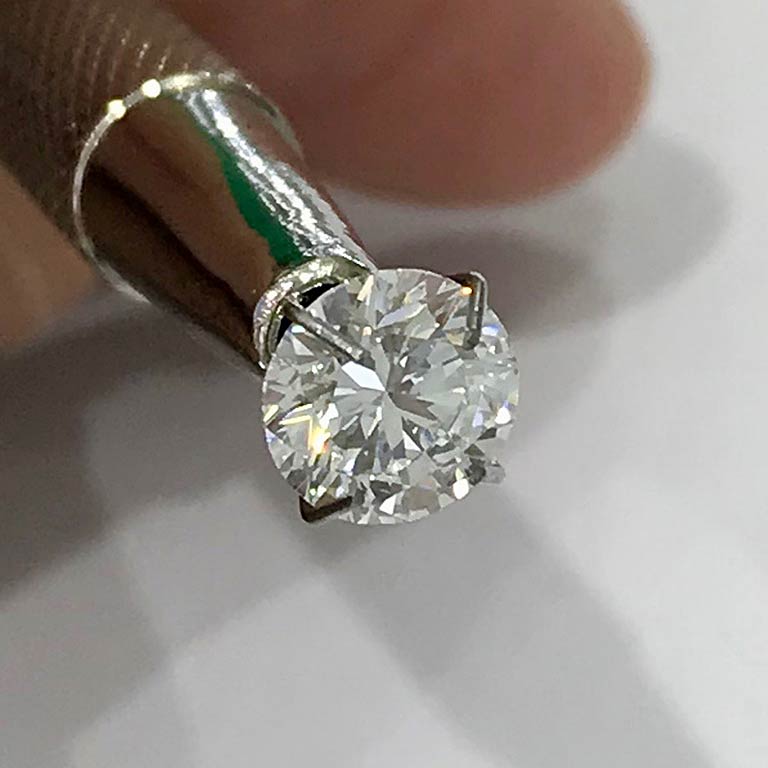
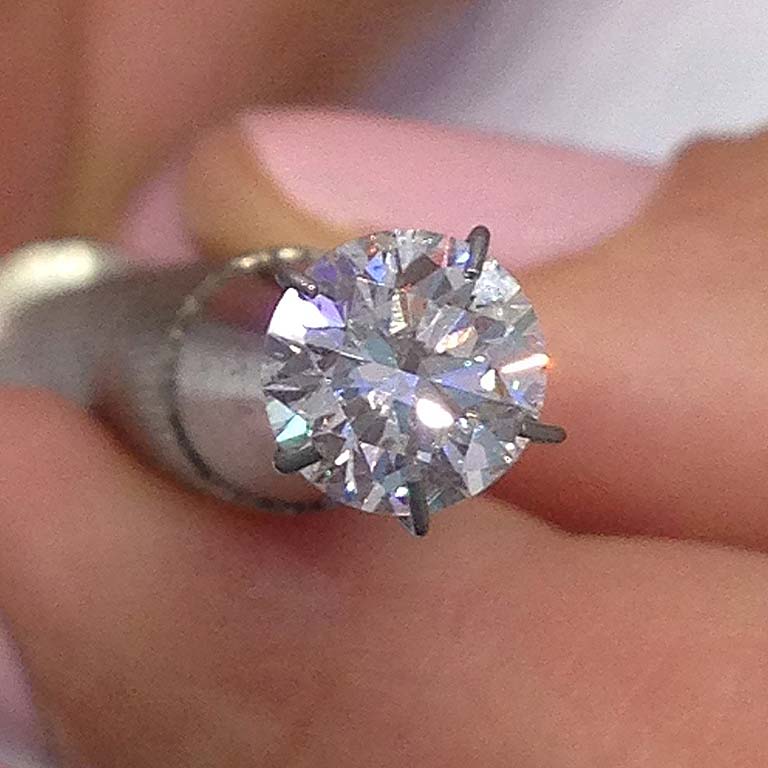
The feeling in the diamond comes from its ability to sparkle. The more sparkles and brilliance, the more stunning the diamond. The lustre of a diamond is determined by the cut. It is all about getting the right proportions and symmetry. A really well cut diamond reflects more light, which can actually make it appear larger than it is. The sparkle of a diamond can be assessed by computer, although cutting is still mostly done by hand by incredibly skilled and careful diamond cutters. Diamonds are cut in several places in the world, but most are certified in Antwerp in Belgium.
With regard to quality, the cut of a diamond is divided into five categories:
Excellent cut diamonds reflect more or less all light that enters the diamond. Only 3% of all diamonds are of this quality.
What exactly is “triple excellent”?
I always recommend 3 x EXC. When choosing a diamond, what you are looking for is one that will sparkle as much as possible, and here it is a good idea to maximise not only the cut but also the polish and symmetry.
Symmetry is about how successful they have been in giving the diamonds facets, and where they are located relative to each other. Is the diamond’s centre really in the middle of the diamond?
The polish is also very important. After all, you do not want the diamond to have dull surfaces or scratches after cutting.
Triple excellent provides the very best conditions to make the diamond your most captivating friend.
So, to summarize all this and give you tips for a diamond to be worn forever on your left ring finger, I would choose a brilliant cut round diamond, E, VS1, 3 x EXC, slight or non-fluorescent.
